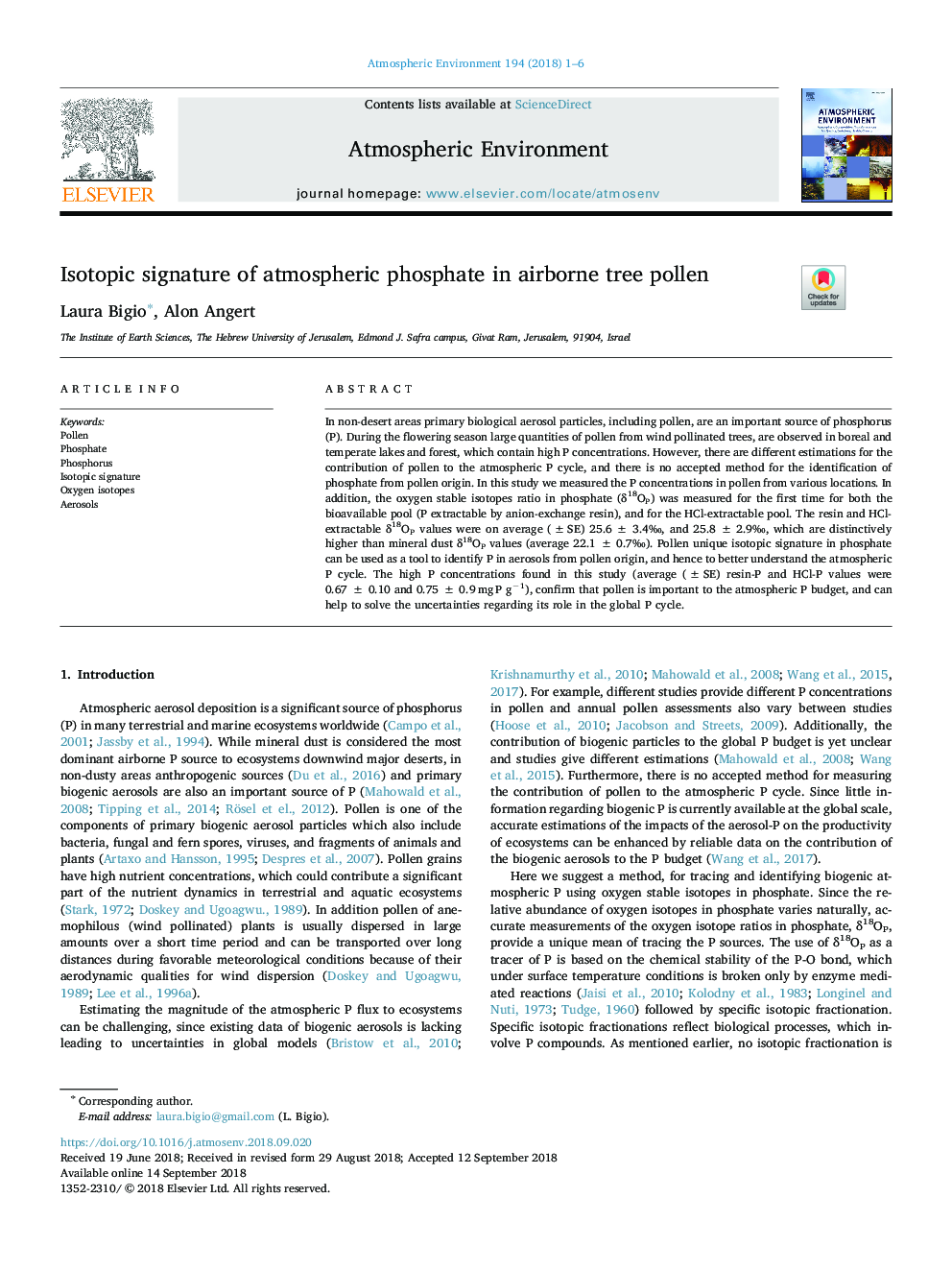| Article ID | Journal | Published Year | Pages | File Type |
|---|---|---|---|---|
| 10223581 | Atmospheric Environment | 2018 | 6 Pages |
Abstract
In non-desert areas primary biological aerosol particles, including pollen, are an important source of phosphorus (P). During the flowering season large quantities of pollen from wind pollinated trees, are observed in boreal and temperate lakes and forest, which contain high P concentrations. However, there are different estimations for the contribution of pollen to the atmospheric P cycle, and there is no accepted method for the identification of phosphate from pollen origin. In this study we measured the P concentrations in pollen from various locations. In addition, the oxygen stable isotopes ratio in phosphate (δ18OP) was measured for the first time for both the bioavailable pool (P extractable by anion-exchange resin), and for the HCl-extractable pool. The resin and HCl-extractable δ18OP values were on average (±SE) 25.6â¯Â±â¯3.4â°, and 25.8â¯Â±â¯2.9â°, which are distinctively higher than mineral dust δ18OP values (average 22.1â¯Â±â¯0.7â°). Pollen unique isotopic signature in phosphate can be used as a tool to identify P in aerosols from pollen origin, and hence to better understand the atmospheric P cycle. The high P concentrations found in this study (average (±SE) resin-P and HCl-P values were 0.67â¯Â±â¯0.10 and 0.75â¯Â±â¯0.9â¯mgâ¯P gâ1), confirm that pollen is important to the atmospheric P budget, and can help to solve the uncertainties regarding its role in the global P cycle.
Related Topics
Physical Sciences and Engineering
Earth and Planetary Sciences
Atmospheric Science
Authors
Laura Bigio, Alon Angert,
